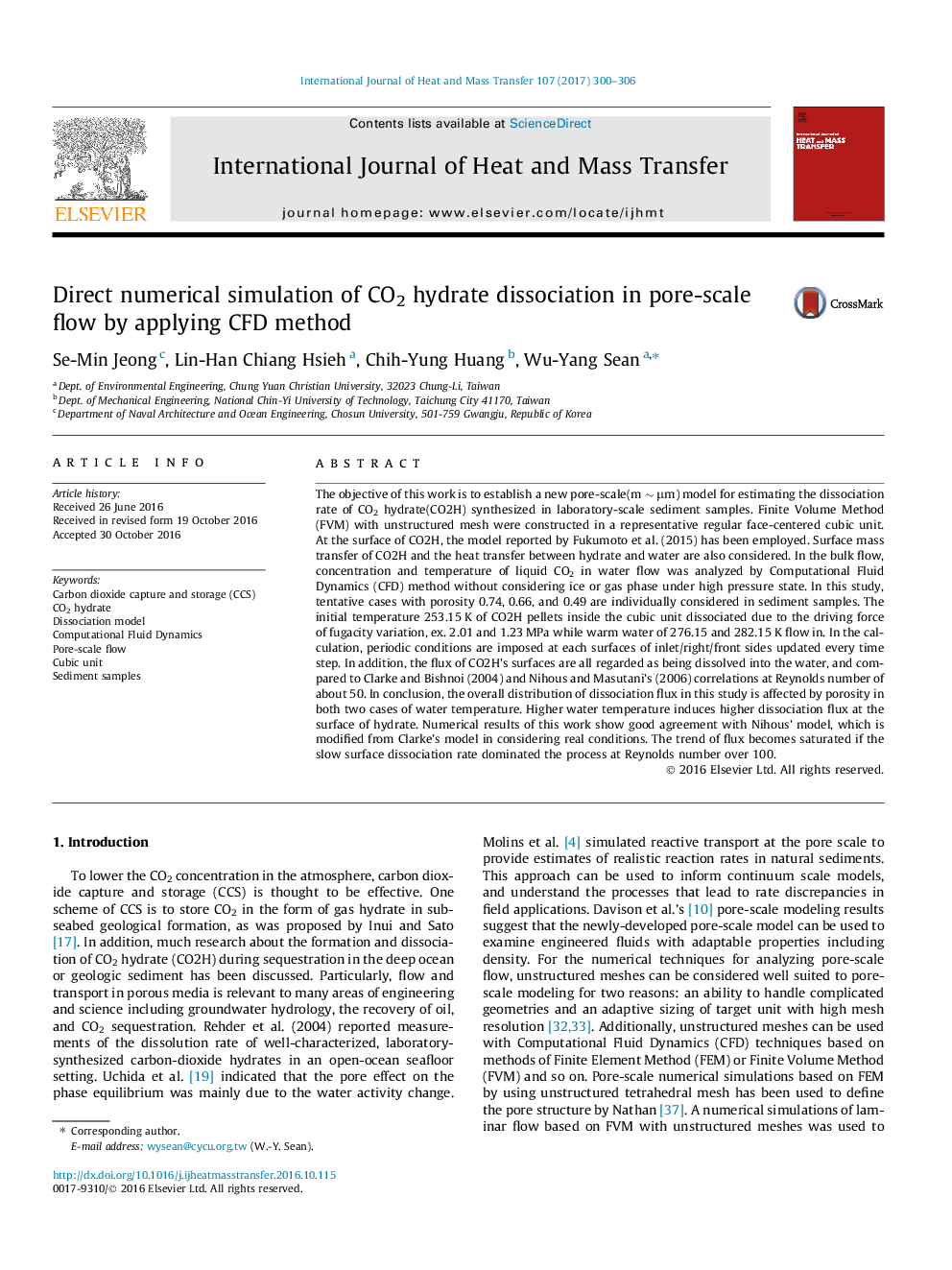| Article ID | Journal | Published Year | Pages | File Type |
|---|---|---|---|---|
| 4994587 | International Journal of Heat and Mass Transfer | 2017 | 7 Pages |
Abstract
The objective of this work is to establish a new pore-scale(m â¼Â μm) model for estimating the dissociation rate of CO2 hydrate(CO2H) synthesized in laboratory-scale sediment samples. Finite Volume Method (FVM) with unstructured mesh were constructed in a representative regular face-centered cubic unit. At the surface of CO2H, the model reported by Fukumoto et al. (2015) has been employed. Surface mass transfer of CO2H and the heat transfer between hydrate and water are also considered. In the bulk flow, concentration and temperature of liquid CO2 in water flow was analyzed by Computational Fluid Dynamics (CFD) method without considering ice or gas phase under high pressure state. In this study, tentative cases with porosity 0.74, 0.66, and 0.49 are individually considered in sediment samples. The initial temperature 253.15 K of CO2H pellets inside the cubic unit dissociated due to the driving force of fugacity variation, ex. 2.01 and 1.23 MPa while warm water of 276.15 and 282.15 K flow in. In the calculation, periodic conditions are imposed at each surfaces of inlet/right/front sides updated every time step. In addition, the flux of CO2H's surfaces are all regarded as being dissolved into the water, and compared to Clarke and Bishnoi (2004) and Nihous and Masutani's (2006) correlations at Reynolds number of about 50. In conclusion, the overall distribution of dissociation flux in this study is affected by porosity in both two cases of water temperature. Higher water temperature induces higher dissociation flux at the surface of hydrate. Numerical results of this work show good agreement with Nihous' model, which is modified from Clarke's model in considering real conditions. The trend of flux becomes saturated if the slow surface dissociation rate dominated the process at Reynolds number over 100.
Keywords
Related Topics
Physical Sciences and Engineering
Chemical Engineering
Fluid Flow and Transfer Processes
Authors
Se-Min Jeong, Lin-Han Chiang Hsieh, Chih-Yung Huang, Wu-Yang Sean,
